Editor’s note: This article originally appeared on ThePortalist.com, and is reposted here with permission.
When I was growing up, there were so few queer characters in pop culture that I lived on a media diet of Sassy Magazines and the hope that I’d see myself reflected somewhere by someone.
It wasn’t until I was in my early 20s that LGBTQIA characters were actually depicted in the media I loved: When Willow and Tara made magic together for the first time on Buffy the Vampire Slayer, my heart sang with recognition.
The validation and encouragement that comes from seeing yourself reflected in the culture you value is just as important to me now as it was then. But unfortunately, in 2017 it can still be a struggle to find positive LGBTQIA representation in media — particularly for people of color. The Gay and Lesbian Alliance Against Defamation (GLAAD) found in their most recent annual TV report card that around 64% of LGBT characters on broadcast TV in in 2016 were white, and that percentage was even higher for cable and streaming platforms. Some letters in that acronym are also more likely to see themselves positively represented than others.
My personal gravitation has always been towards television and film, although I know many people who have found themselves best represented in novels and comic books. My heart has also always belonged to science fiction and fantasy, genres that usually feature expansive worlds and diverse characters.
One might think that sci-fi and fantasy creators would use that expansiveness as an opportunity to positively represent all sexualities and genders. But while there are certainly some sci-fi and fantasy titles with great LGBTQIA characters (my personal favorites include Lost Girl and Sense8), there’s still a lot of work to be done.
RELATED: 8 Underrated Fantasy TV Shows Waiting to be Discovered
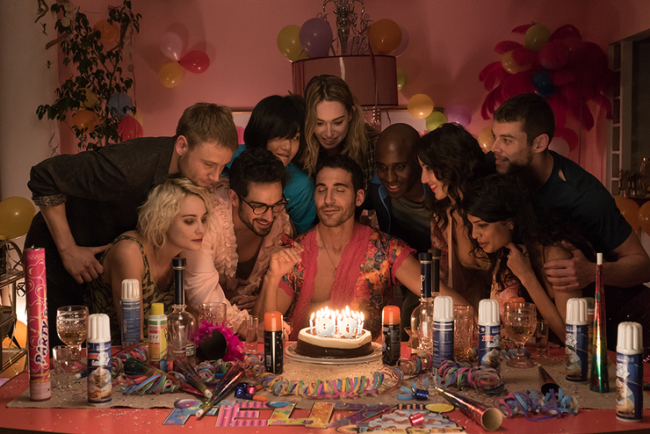
Still from Sense8. Photo Credit: Via Netflix
In my own experience, LGBTQIA audiences can be fiercely loyal to the few shows that do right by them. The opposite, of course, is also true.
For an example, look at The 100. Season three of this post-apocalyptic sci-fi show featured a scene where a lesbian character was killed by a stray bullet soon after her first love scene with another woman.
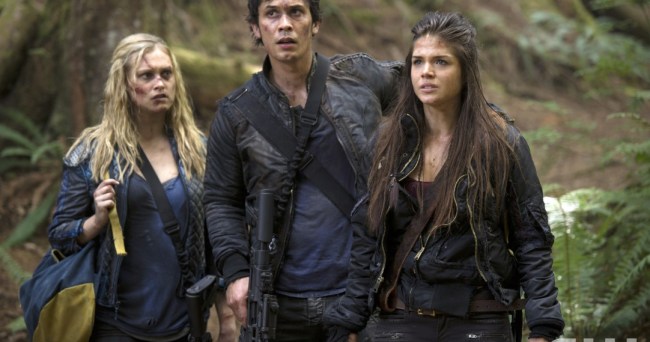
Still from The 100. Photo Credit: The CW
That death was an example of ‘Burying Your Gays,’ a trope seen in both genre and mainstream TV in which a queer character is killed off—usually to further the story of a white, cis, straight character. Fans responded to the presence of this trope on The 100 with petitions, fundraisers, guidelines for creators on how to do better, and even the launch of a new convention for LGBTQ women.
In 2016 alone, 10 queer female characters on sci-fi and fantasy shows died—many of them in brutal, violent ways. That’s a staggeringly high number when you consider how few LGBTQIA characters there are on TV overall. When queer audiences are looking to find themselves in media, it can be damaging for us to repeatedly receive the message that our stories are doomed to end in tragedy.
So, clearly, not all science fiction or fantasy representation is positive. To me, “positive representation” means fleshed out characters that are more than just window dressing for the stories of straight, cis people.
With that definition in mind, I turned to some creative minds in the entertainment industry to get their thoughts on where queer representation in geek TV stands today—and how we can keep improving.
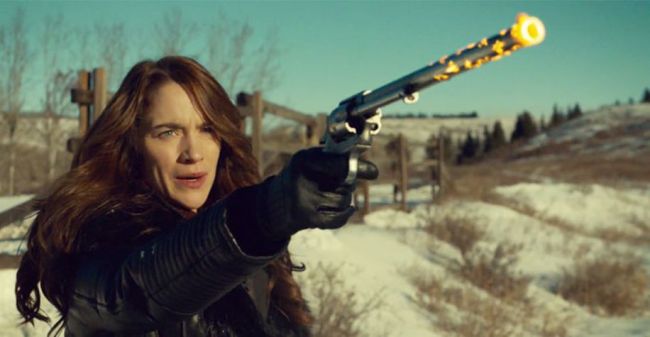
Still from Wynonna Earp. Photo Credit: SyFy
Emily Andras is currently showrunner on SyFy’s weird science fiction series Wynonna Earp. She’s also worked on series like Lost Girl and Killjoys, and was kind enough to weigh in.
“As with all television, it’s hard to generalize,” she told me. “Some sci-fi genre does LGBT representation well; some tries but its efforts might make us wince, and some doesn’t bother to try at all. That being said, I do think genre is paving the way. It’s a natural fit: Genre is ultimately about outsiders trying to make sense of a strange, often hostile world—and if that doesn’t speak to the queer experience, what does? Much of what attracted me personally to genre is the chance to develop characters that don’t normally get their due on television. Likewise, genre audiences tend to crave unique and broad-minded storytelling. It’s a match made in space fantasy heaven. And it doesn’t have to be either/or: We can celebrate those shows we think are ‘getting it right’ while urging them and their less progressive counterparts to continue to grow and do better—as we should with all media representation.”
Do science fiction and fantasy tropes still subtly present LGBTQ characters as strange and alien?
Some of the shows with great queer representation aren’t on traditional TV networks. Carmilla is a very queer web series about vampires that’s become a hit since it premiered on YouTube in 2014. The series features no less than three queer women, two of whom are the show’s leads, as well as a non-binary supporting lead.
Carmilla series writer and director Jordan Hall says that the nature of genre TV can encourage that kind of great representation. “The license that sci-fi and fantasy provides has allowed people to push at issues that might be harder to address in more mundane genres—fictional societies and characters with capabilities like shifting between differently constructed bodies can allow us to approach issues in innovative ways, and/or illustrate the world as we think it should be.”
Although, Hall points out that relying on genre shows to supply our best representation of the LGBTQIA community comes with its own issues. “What is being said when the accepting societies we create are positioned as flights of the imagination? When a physical body that doesn’t match the gender identity of the consciousness in it is the result of possession, or an alien symbiont, or some other supernatural means? Do science fiction and fantasy tropes still subtly present LGBTQ characters as strange and alien instead of including them as part of the normal spectrum of human experience?”
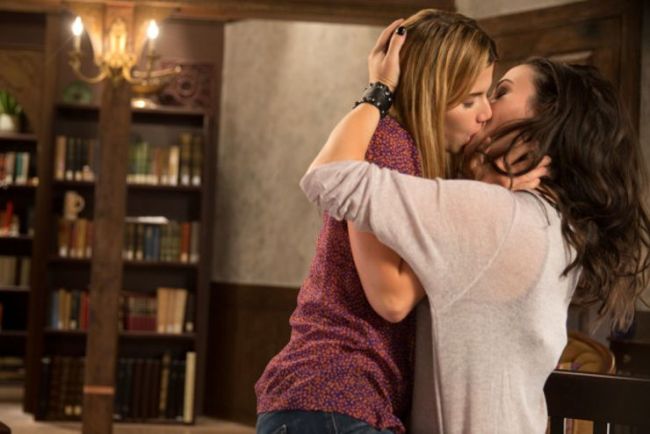
Still from Carmilla. Photo Credit: YouTube
Apart from these questions, Hall still feels that sci-fi and fantasy TV is making strides in the quantity of queer characters depicted—even if it stumbles in the quality of their storylines. “In television, especially, we still see a lot of ‘token’ LGBTQ characters in supporting roles (I suspect out of a false assumption that straight viewers may be alienated by an LGBTQ protagonist),” Hall writes. “This feeds directly to the truly awful ‘Bury Your Gays’ trope, because when sweeps roll around, supporting roles usually make for the juiciest kills—and then a community’s sole representative is being killed. (Not that the trope would be acceptable either way.)”
“There also isn’t much plurality in the gender identities afforded to LGBTQ characters—androgynous, butch, and even flamboyant presentations (just to name a few) are still pretty rare unless they’re deliberately being showcased for their ‘strangeness.’ Hall adds, “It is worth noting, though, that this kind of analysis is possible because the body of LGBTQ characters in sci-fi and fantasy continues to grow, and I’m hopeful that the variety and sophistication of those representations will continue to grow as well.”
RELATED: 5 Times Sailor Moon Taught Me the Difference Between Empowerment and Strength
I wondered if the worlds of comics, books, and gaming experienced the same problems in LGBTQIA representation. So I reached out to Sam Maggs, author of The Fangirl’s Guide to the Galaxy and Wonder Women, and a writer at the video game company, Bioware. Bioware has featured queer and trans characters prominently in their games Mass Effect and Dragon Age.
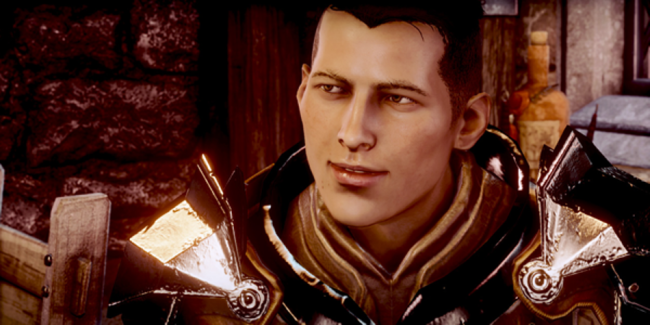
Dragon Age: Inquisition‘s Krem Photo Credit: BioWare
Overall, Maggs says she sees sci-fi as a very progressive place: “Sci-fi has always been the most progressive genre for diverse representation, and we’re seeing that trend continue today. It’s a place where people who consume fiction can explore new ideas without feeling immediately threatened by them, which is why creators can utilize the sci-fi space to put forth ideas that might seem radical in contemporary fiction.”
I asked Maggs to share some of her favorite representations of queerness in sci-fi, and she provided quite the list. “I love the diversity in my favorite book of 2015, Becky Chambers’ The Long Way to a Small, Angry Planet. On a rag-tag space crew that’s part Mass Effect and part Firefly, Chambers included not only a wide variety of LGBT characters, but also characters of differing gender identities. Plus, you fall in love with them all instantly.”
“In comics, IDW’s Jem and the Holograms (drawn by a trans woman) includes queer characters on both the Holograms and the Misfits, and features one of the best coming-out scenes by a trans character I’ve ever seen in comics.”
“In games, I might be biased, but I can’t overstate the importance of what BioWare has done to make gaming inclusive for people of all genders and sexualities – both behind the scenes and represented on-screen.”
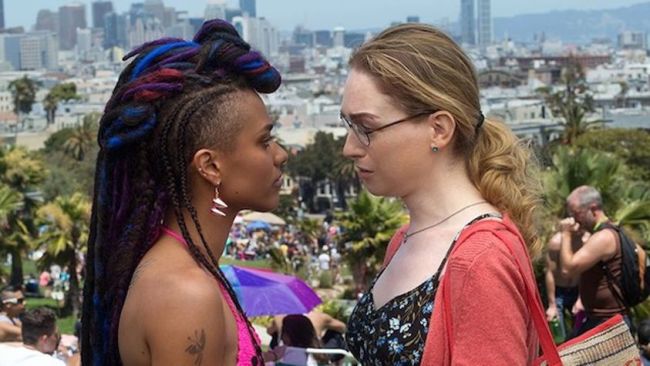
Still from Sense8. Photo Credit: Netflix
In all, what I learned from speaking with these creators is that having a queer character doesn’t automatically make a story progressive. Creating meaningful LGBTQIA characters requires thought into how they are framed and represented. Writers and creators should aim to think outside the box to create intersectional TV, with LGBTQIA characters that are just as fleshed out, complex, and centered in the narrative as their straight or cis counterparts.
There will always be pushback—perhaps more now recently, given today’s political climate. But it’s very clear that positive LGBTQIA representation in media changes hearts and minds. I know it changed me, offering validation and inspiration when I had never before seen myself on screen. Sci-fi and fantasy have the built-in ability to challenge perceptions, which makes them a natural place for queer representation to thrive. All it will take is a few more creators willing to look beyond toxic tropes to create more worlds where all of us can see ourselves.
[Editor’s Note:The Long Way to a Small, Angry Planet author Becky Chambers was formerly an editor at The Mary Sue, and worked there at the same time as Sam Maggs and The Portalist’s Carolyn Cox.]
RELATED:Mass Effect Choices: The Power of a Personalized Journey
Feature still of “Buffy the Vampire Slayer” via 20th Century Fox Television
Dana Piccoli is a pop culture critic and entertainment writer who lives recently relocated from New York to Greenville, SC. She’s a former Staff Editor and writer for AfterEllen and contributes to The Mary Sue, TV Junkies and more. She’s also written for Curve Magazine, Go Magazine, and Alloy Entertainment. You can follow her on Twitter and Tumblr.
—The Mary Sue has a strict comment policy that forbids, but is not limited to, personal insults toward anyone, hate speech, and trolling.—
Follow The Mary Sue on Twitter, Facebook, Tumblr, Pinterest, & Google+.









Published: Feb 14, 2017 02:56 pm